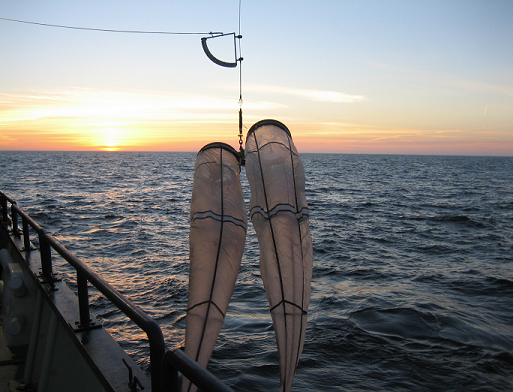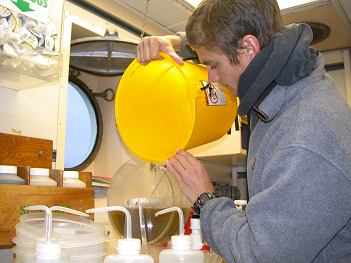|
Meetings: PICES and ICES are organizing an international symposium on "Small Pelagic Fish: New Frontiers in Science for Sustainable Management" highlight the state-of-the-science in the dyanmics of planktivorous fishes and their ecosystems. The meeting is scheduled for November 2022. Please check the website for updates during this current era when so much must be rescheduled. Education: NOAA partners with the University of Hawaiʻi and other academic institutions to pursue cutting-edge research on ocean dynamics. The Cooperative Institute for Marine and Atmosphic Research (CIMAR) has eight research themes: ecosystem forecasting, ecosystem monitoring, ecosystem-based management, protection and restoration of resources, equatorial oceanography, climate research and impacts, tropical meteorology, and tsunami and other long-period ocean waves. These research projects can often support graduate research and postdoctoral fellowships. Learn more about the Oceanography Program at the University of Hawaiʻi at Mānoa to see how you can begin your career as a marine scientist. Data: If you are interested in exploring the output of atmosphere-ocean general circulation models and earth system models, the PCMDI database hosted at Lawrence Livermore National Laboratory is a valuable resource for looking at the output of various simulations. The NOAA Earth System Research Laboratory hosts links to a number of climate datasets. We enjoy making mesmerizing plots of climate variables and contemplating ecosystem dynamics. The animation below was created using COBE-SST temperatures. The making of this animation was motivated by a desire to view the current SST anomalies of the Eastern North Pacific (i.e., the warm blob) in a long-term perspective. Note that the datasets used to derive the ONI, PDO, and NPGO are not identical (to each other or to COBE-SST). No long-term trend in temperature anomaly has been removed from the data animated, and so the recent warm anomaly is likely due to a combination of anthropogenic warming and natural variability. Given the increased vertical stratification and lower rates of nutrient supply, primary production, and secondary production associated with past warm anomalies in the Northeast Pacific, we would expect extremely poor conditions for top predators in the next couple years (e.g., seabirds and mammals in 2015 and 2016 and salmon for ocean-entry years of 2014 and 2015; Bill Peterson pioneered use of such data to generate salmon forecasts at the NOAA Northwest Fisheries Science Center) and increased occurrence of harmful algal blooms. What remains to be seen is how the impacts of this warm anomaly (which was not preceded by an El Niño event) differ from warm events of the past (which have typically been triggered by El Niño). The NOAA NCEI website allows user manipulation of such temperature anomaly animations. The California Cooperative Oceanic Fisheries Investigations (CalCOFI) Program is arguably the most iconic ocean time series observational effort. The program is supported by the Scripps Institution of Oceanography, NOAA's National Marine Fisheries Service, and the California Department of Fish and Wildlife. Additionally, the California Current Ecosystem Long-term Ecological Research Program provides data and a platform to consider specific ecological processes in the region. Both the CalCOFI data and the data compiled by the CCE-LTER are excellent resources for those of us examining the ecosystem oceanography of the Northeast Pacific. The Environmental Research Division's Data Access Program (ERDDAP) is an invaluable resource for easy access to environmental data, particularly for the California Current and the CalCOFI dataset. Interest: Isaac Held at NOAA's Geophysical Fluid Dynamics Laboratory maintains an excellent blog which provides a "forum for discussion of climate dynamics, with an emphasis, but not an exclusive focus, on climate change." Brendan Turley, a PhD candidate in the lab group, answers some questions from the media about recent humpback whale sightings off our Carolina coastline in this local news clip. To learn more about local fisheries in the South Carolina region (and surrounding states), visit NOAA's Southeast Fisheries Website. Curious about zooplankton? This great website contains photos of plankton commonly found off the coast of South Carolina. One of the authors of the book containing these photos is USC's very own Dr. Dennis Allen! The Fisheries Science group at UW maintains at least a couple interesting webpages on fisheries science. For controversies in fisheries science, see CFOOD-UW. If you are particularly interested in fisheries-science or fisheries-biology manuscripts with high citation counts, Trevor Branch has assembled an interesting webpage. It would be great to compile a similar page for the field of fisheries oceanography. |
|
|
| |
 |




